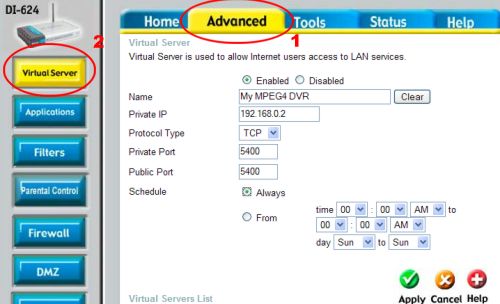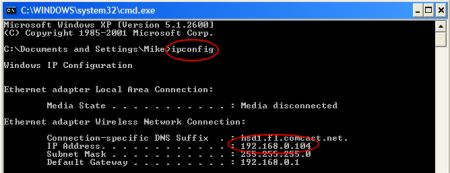DLink Port Forwarding Setup (Virtual Server)
DLink port forwarding, also known as virtual server, allows you to configure inbound Internet connections to your router to be routed to specific devices on the network. In the context of CCTV cameras and surveillance systems, your router is configured to forward requests to your surveillance DVR (standalone or Geovision) or directly to IP cameras. The IP address that your router
assigns to your DVR is an internal IP address (LAN) that normally can not be accessed from outside of your local network. This is why port forwarding setup is needed.
- Open your D-Link router's control panel by going to the IP address http://192.168.0.1/
in a web browser. You will be prompt for a password. If you did not
setup a password on your router, the dlink default password is blank. Enter admin for the username and leave
the password blank.
- After you are logged into your router, 1) click on the "Advanced" tab, then
2) click on the "Virtual Service" button. This will display the
Virtual Server screen as seen below:

- On the Virtual Server screen:
- Click on the "Enabled" radio button
- Choose a Name for this service. This can be anything that you choose.
- Enter the IP address of your DVR or Geovision computer. For Geovision computers follow the below instructions.
- Select TCP for the Protocal Type
- Enter the port # for both the Private Port and Public Port. Ports 80, 4550, and 5550 all need to be forwarded for Geovision webcamserver to work
- Select "Always" for Schedule
- Click on the "Apply" button
- On success, the screen will display a settings saved screen
The virtual service, or port forwarding, to access your DVR is now setup.
What is my Geovision computer's IP
- If you do not know what the IP address is of your computer, in Windows press the start button then select Run.
- In the Open field of the Run window type cmd, then press OK. A command screen will open.
- On the command line type ipconfig
- The results should look similar to below.

|












